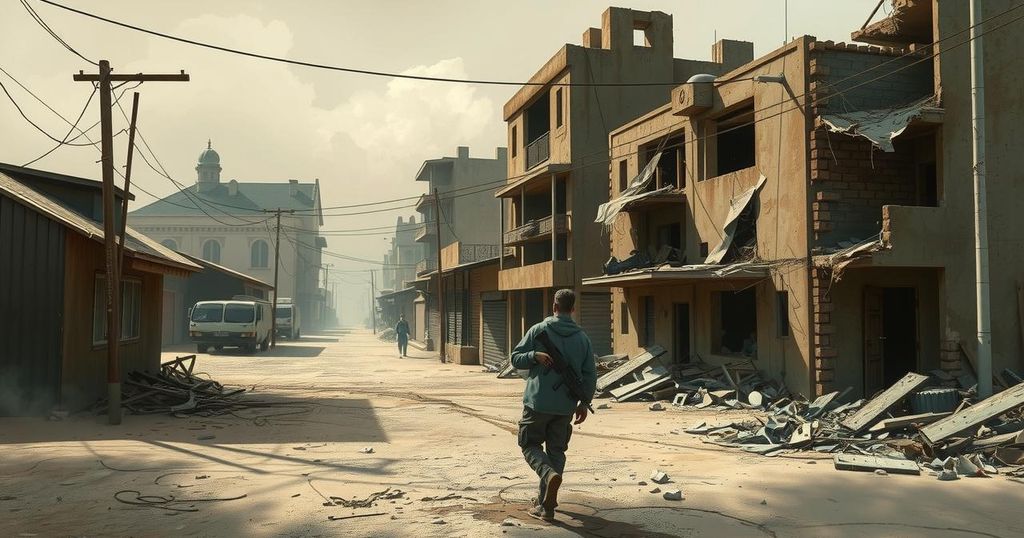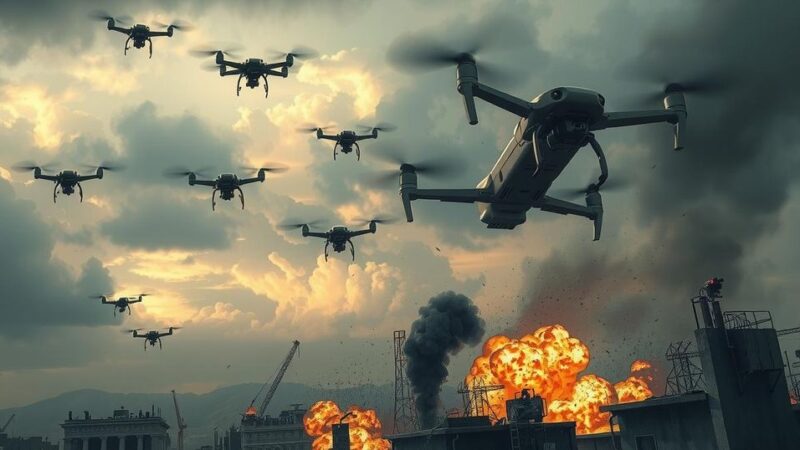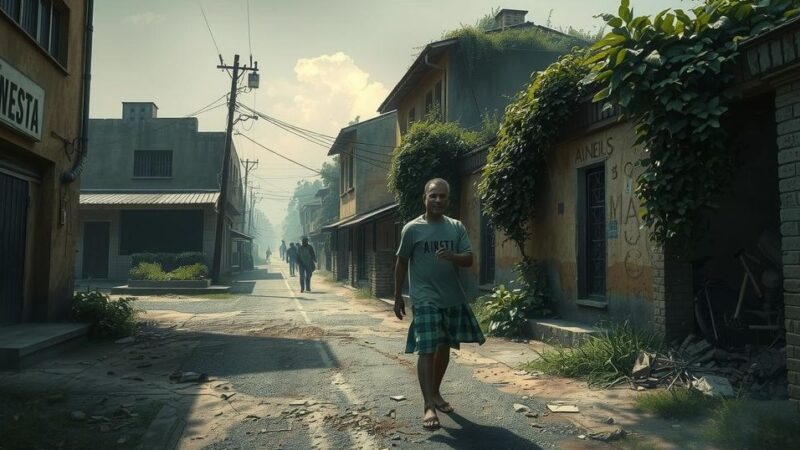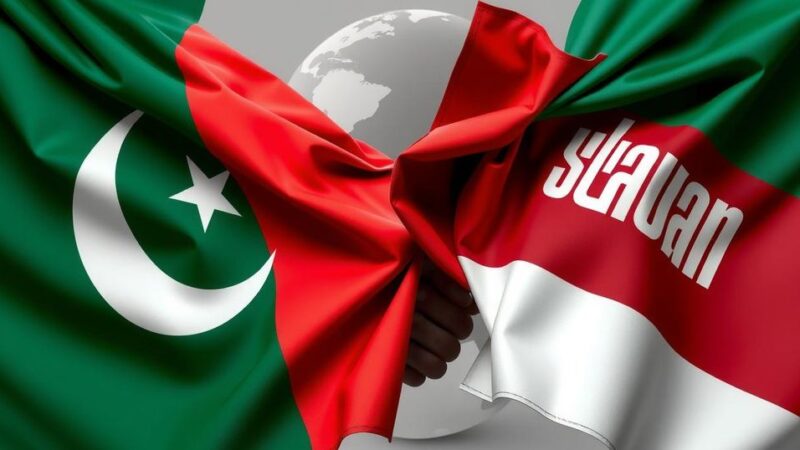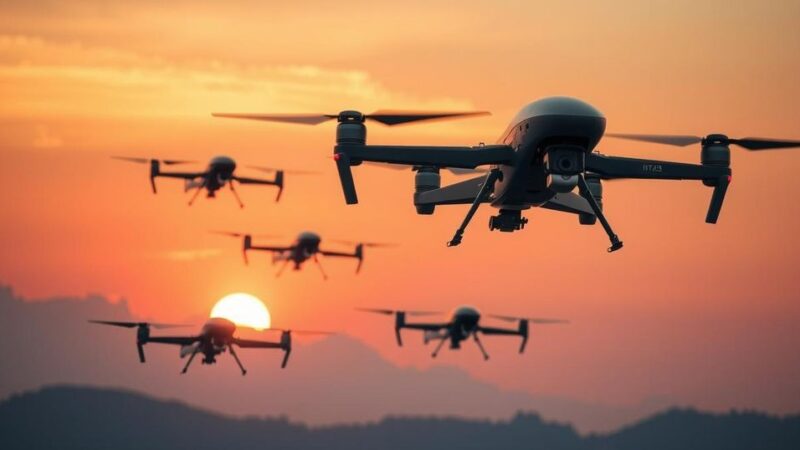Goma, a city once vibrant under Mount Nyiragongo, is now affected by chaos post-M23 takeover. Peace remains elusive, daily life disrupted, and crime surging, aggravating the humanitarian toll as over 1.2 million have fled. The situation continues to evolve with no signs of resolution in sight.
GOMA, DR Congo, May 14 (Xinhua) — The city of Goma, once a vibrant border hub at the feet of Mount Nyiragongo, now finds itself under a grim cloud of tension and uncertainty more than three months after the March 23 Movement (M23) rebel group overtook it. Daily existence for the two million residents has been noticeably disturbed and the elusive peace remains just out of reach.
The pivotal moment in Goma’s recent history occurred on January 27 when M23 fighters advanced and seized the city, reviving painful memories from 2012 when the same group had taken control. The rapid escalation led heavy fighting to erupt, transforming Goma into a nightmarish war zone. Streets were bombarded, neighborhoods shattered, and crucial facilities such as the airport were caught in the crossfire. Official reports suggest that the violence claimed over 8,500 lives and injured nearly 5,600, leaving even displacement camps vulnerable to the chaos.
While the M23 announced a “humanitarian ceasefire” on February 4, the violence has shown no signs of abating in North and South Kivu provinces. They also captured Bukavu, the capital of South Kivu, and now maintain strategic positions across the region. Observers warn that the conflict’s current phase could become more entrenched than anything before it. Corneille Nangaa, former head of elections in the country and now the leader of M23’s political branch, stated that he aims to “liberate the entire country,” including Kinshasa.
In the wake of the encroaching gloom felt since Goma’s fall, silence pervades the city—gunfire has quieted but chaos and oppression have proliferated. Commercial hubs that once buzzed with activity now stand deserted. A banking collapse has led to cash shortages, crippling the local economy while crime rates have soared, particularly after dark. With state institutions nonexistent, the M23 enforces control through checkpoints and by imposing taxes.
The humanitarian crisis has intensified as well. The International Organization for Migration reports that over 1.2 million individuals have been newly displaced across the Kivu provinces since January – many who had fled to Goma again faced relocation and uncertainty. In early February, the M23 issued a harsh ultimatum seeking the removal of major displacement camps such as Bulengo and Lushagala. Families were forced to leave their temporary homes, fleeing with only what they could carry, only to find their villages decimated.
Just 27 kilometers west of Goma lies Sake, once the city’s last bastion. Since late 2023, Sake has seen relentless clashes between M23 and Congolese forces supported by local militias. The aftermath is stark: street fighting left the town in ruins, adding to the already severe plight.
Danger still abounds in these areas, with unexploded ordnance reportedly littering the nearby grounds. “We have found live shells in over ten locations,” local resident Christian Kabuya recounted, highlighting the dire hazards faced by children and adults alike from accidental detonations.
In western Goma, the Ndosho Hospital remains the only medical facility still receiving casualties, overwhelmed by the influx of wounded. Backed by the International Committee of the Red Cross (ICRC), the hospital operates under extreme pressure, highlighting the dire state of healthcare in the area.
ICRC veteran Taoffic Mohamed Toure remarked on the unique challenges faced here. “The sheer number of actors and the recurring violence make eastern Congo one of the most challenging places we operate,” he noted, reflecting the complexity of the situation.
As efforts for peace stall and ceasefires disintegrate, the fate of eastern DRC’s populace remains tethered to an unending conflict. Goma, with the echoes of redemption from its lava fields, continues to grapple with wounds that seem too deep to heal.
The situation in Goma and surrounding areas of eastern DRC reflects a harrowing narrative of conflict and humanitarian crisis. Following the M23’s takeover and a subsequent surge of violence, the city’s inhabitants face an uncertain future marked by severe disruptions to daily life, economic hardships, and escalating threats to their safety. As the fighting persists and governmental structures remain absent, communities are left grappling with not just physical scars, but deep-seated psychological wounds.
Original Source: english.news.cn
